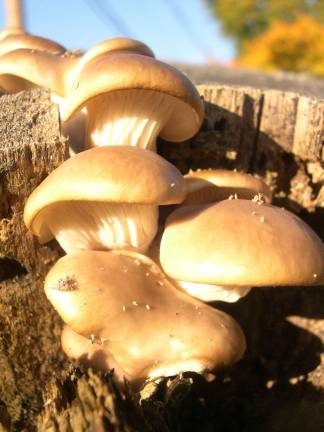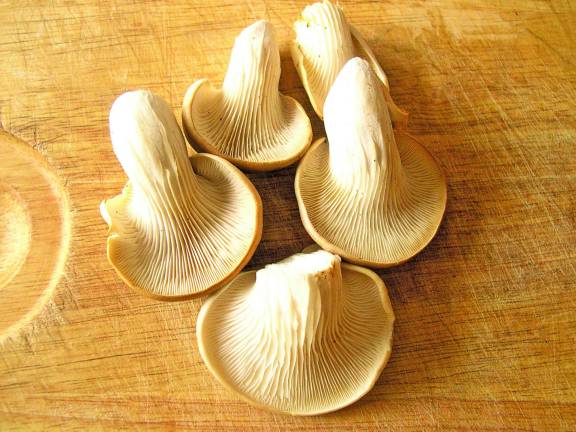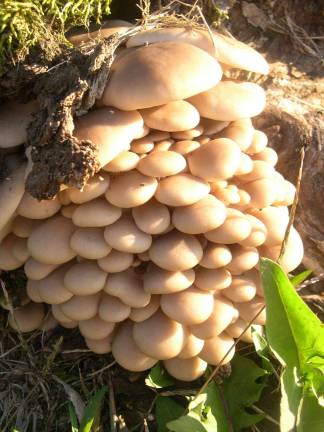Local food is just a fallen tree away



FEW PEOPLE KNOW that you can forage oyster mushrooms in the winter – and now you’re one of them. Sometimes they even come frozen, but once thawed reveal a delicious and medicinal dinner.
Known as the fall oyster mushroom, Panellus serotinus have a yellow spore print (more on this in a bit) and always grow on trees. These mushrooms prefer hardwoods like beech, maple, and tulip poplar. They are one of the very few mushrooms that can be found almost year round. That includes in the middle of winter.
To forage for mushrooms, it is most important to be attentive to rain cycles. Most mushrooms can only be found a few days after the rains, and within a week are either entirely bug eaten and rotten, or gone and decomposed into the earth. This means that the best time to go out looking is right after the rains, or the snow.
A very important factor in identifying oysters is that they are one of very few mushrooms growing directly on wood that have gills and not pores on the underside. A spore print is another necessary clue to properly identify oysters, and can be done by taking a few of the fresh mushroom caps, putting them gill-down on a piece of paper, placing a bowl over them, and leaving them for four to six hours. When you lift the cap, it will have left behind a print on the paper, revealing the color of the spores.
The medicinal aspects of oysters, as with most mushrooms, are profound. One of the chemicals found in mushrooms are polysaccharides, long chain sugar molecules that have been shown to target and kill cancer cells, so eating your mushrooms is a cancer preventative.
There are also high concentration of beta-glucans, which can easily be extracted by simmering in soups and stews, and are shown to be immunomodulating. This means they create balance within the immune system.
Not to dwell on the obvious, but with mushroom hunting it is always important to get your mushrooms verified by an expert, and to get used to their lookalikes. Some of the oyster mushroom’s doppelgangers are mock oyster (Phyllotopsis nidulans), angel wings (Pleurocybella porrigens), Hohenbuehelia petaloides, and several Lentinellus species. A good place to start is mushroom-collecting.com. DAN DE LION